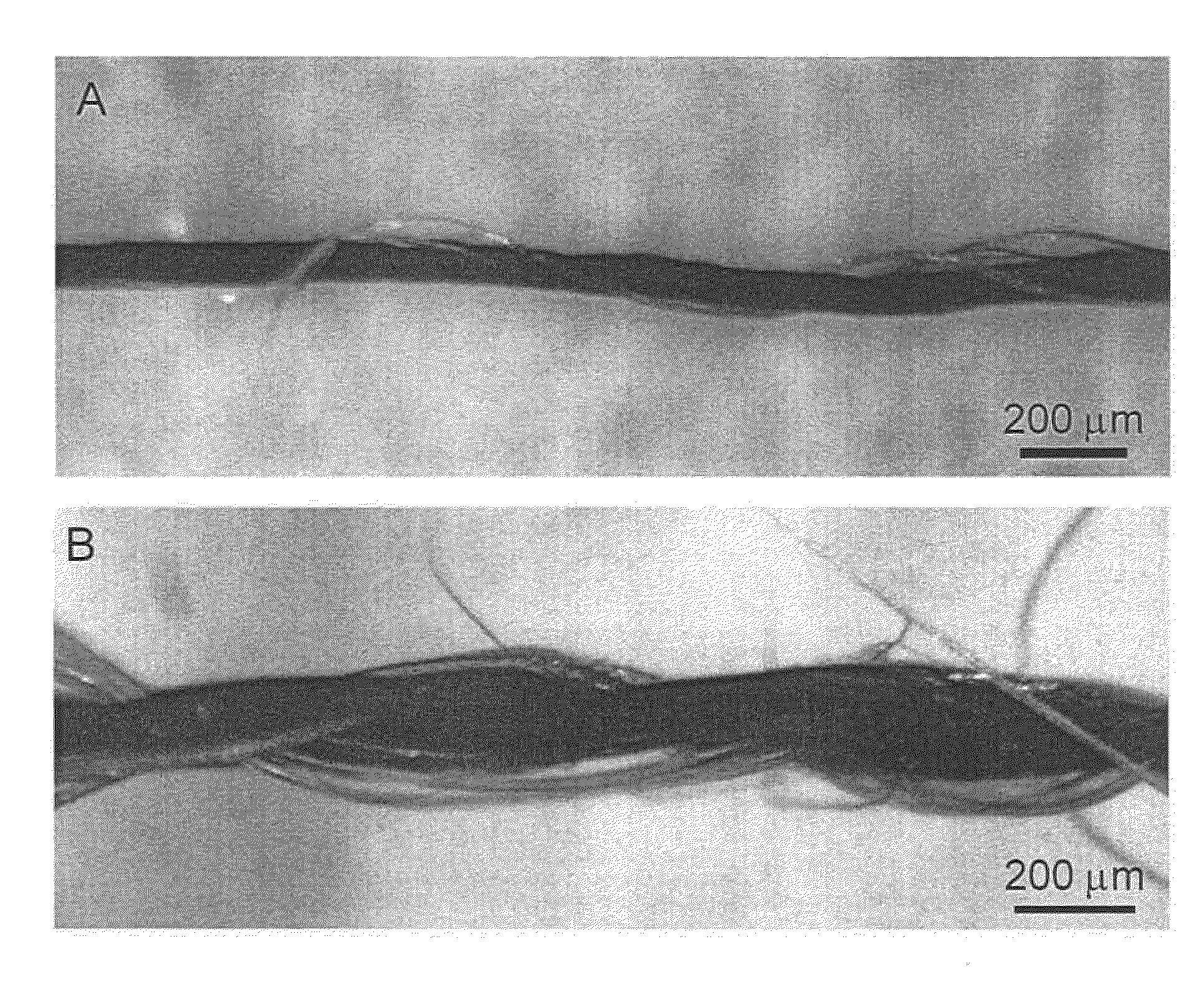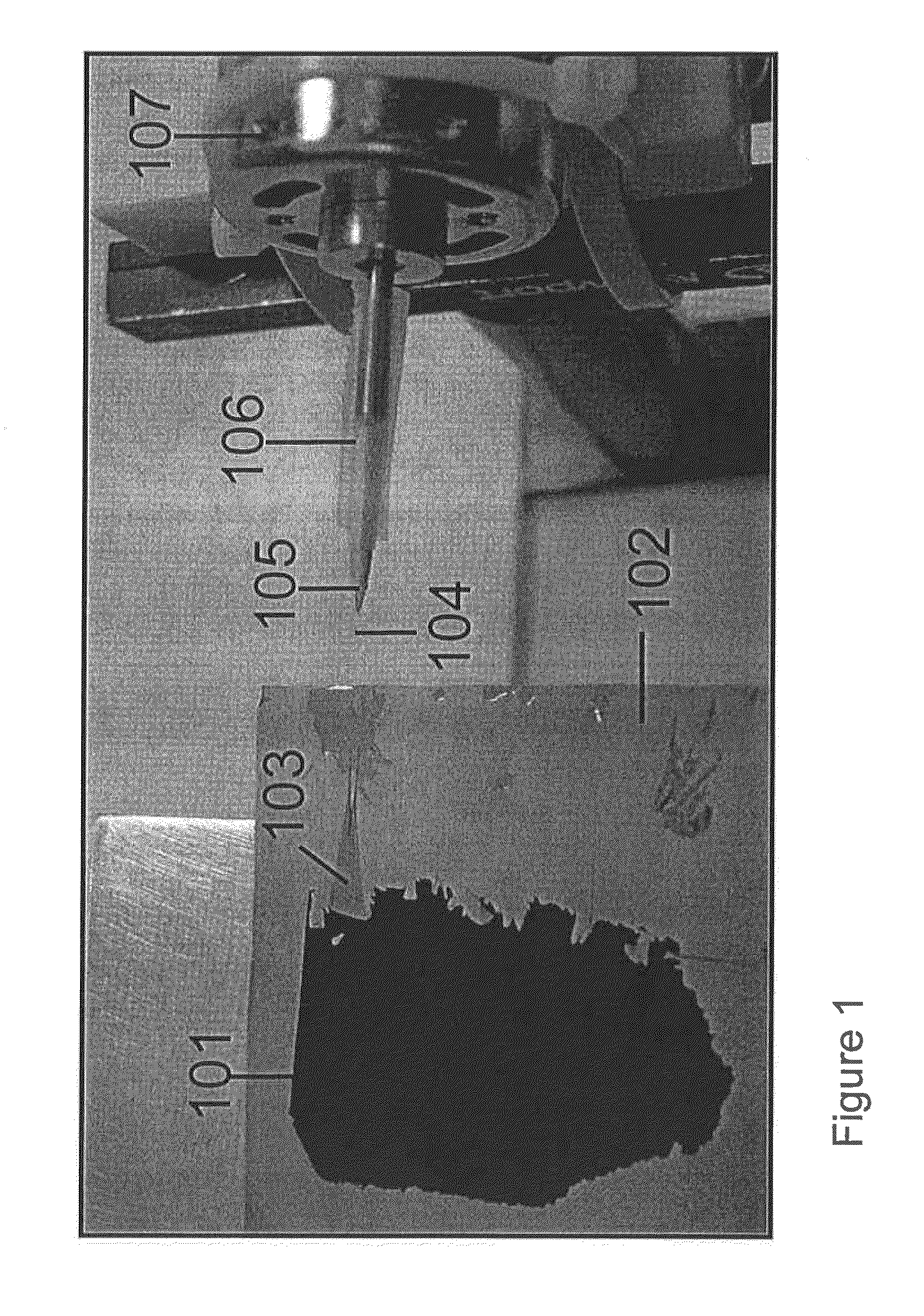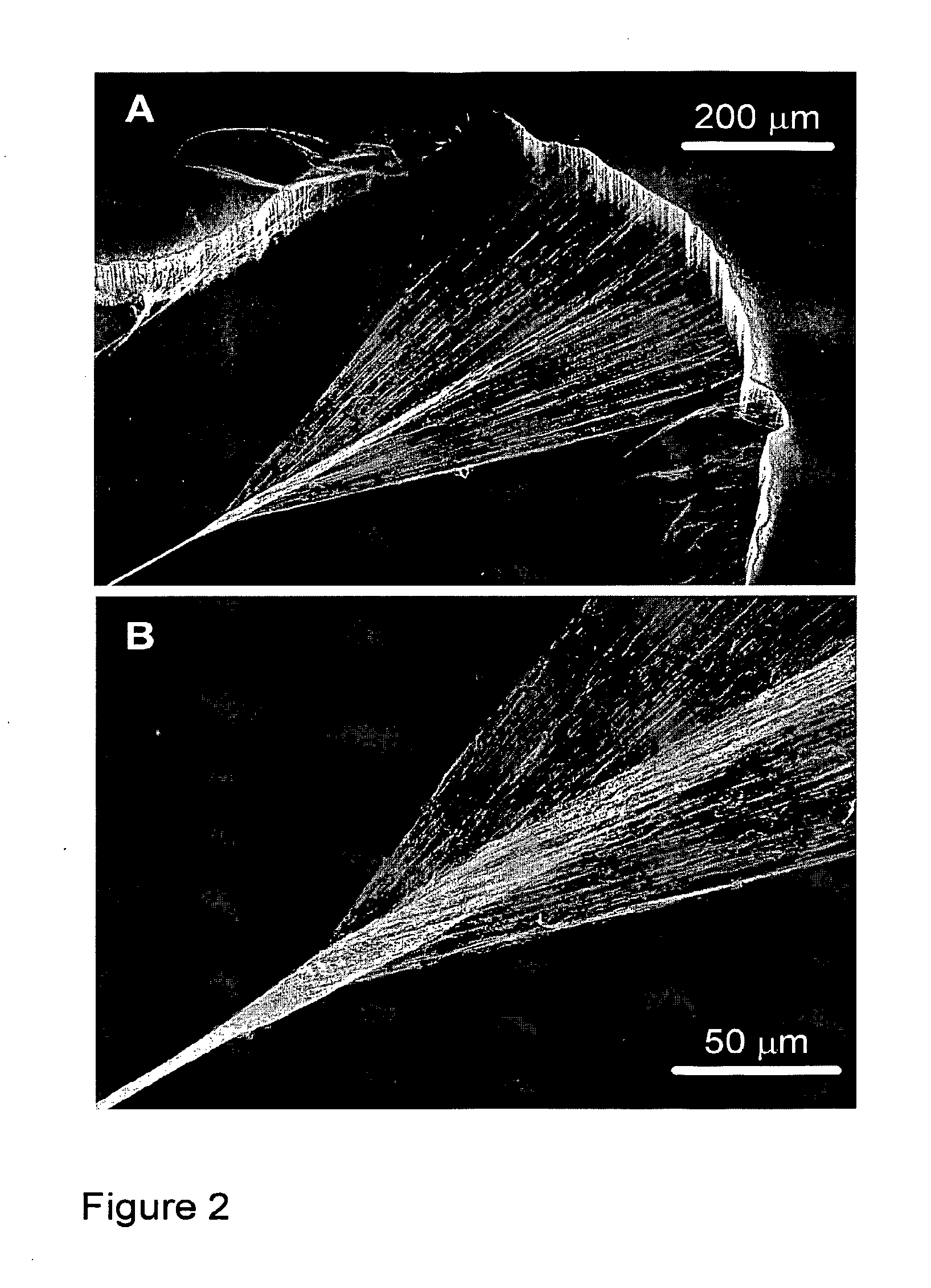Fabrication and application of nanofiber ribbons and sheets and twisted and non-twisted nanofiber yarns
a technology of nanofiber ribbons and nanofiber yarns, which is applied in the direction of secondary cells, chemical vapor deposition coatings, energy inputs, etc., can solve the problems of inability to achieve significant tensile strength in applications such as these and other nanofibers, and the viscosity of melts becomes too high for conventional melts or solution spinning, etc., to achieve high electrical and thermal conductivity, high energy absorption, and extreme toughness
- Summary
- Abstract
- Description
- Claims
- Application Information
AI Technical Summary
Benefits of technology
Problems solved by technology
Method used
Image
Examples
example 1
[0680]This example describes a typical method for growing nanotube forests used for selected invention embodiments. Aligned MWNT arrays (nanotube forests) were synthesized by atmospheric pressure CVD (Chemical Vapor Deposition) in a 45 mm diameter quartz tube using 5 molar percent C2H2 in He at 680° C., at a total flow rate of 580 sccm for 10 minutes. The catalyst was a 5 nm thick iron film that was deposited on a Si wafer substrate or glass substrate by electron beam evaporation. Based on SEM and thermal gravimetric measurements, the purity of the spun yarns was very high (˜96-98% C in the form of MWNTs), with 2-4% Fe and amorphous carbon and no observed carbon particles.
example 2
[0681]This example describes a method of invention embodiments for the introduction of twist during the spinning of carbon nanotubes from a nanotube forest. Previous attempts to draw yarns from nanotube forests resulted in extremely weak assemblies (see K. Jiang, Q. Li, and S. Fan in Nature 419, 801 (2002) and in U.S. Patent Application Publication No. 20040053780 (Mar. 18, 2004)). The present inventors find that simultaneously applied draw and twist processes increase the mechanical strength by a factor of over a thousand. The present inventors also show that the present spin-twist process is able to produce yarns even smaller than one micron in diameter. The fibers of this example were hand drawn during twisting by attaching nanotubes from the side of the nanotube forest of Example 1 to a probe tip that is coaxially attached to the axis of a variable speed motor that was typically operated at about 2000 rpm. In this example, illustrated by the photograph in FIG. 1, attachment was ...
example 3
[0682]This example shows that extremely small diameter yarns can be spun using the method of Example 2. The yarn diameter was determined by controlling the width of the MWNT forest array that was pulled to generate the initial wedge-shaped untwisted ribbon that converged from a thickness of about the height of the forest to the width of the yarn at the wedge apex (FIG. 2). The array width ranged from below 150 μm to about 3 mm to produce singles yarn diameters of between about one and ten microns. A 200 μm wide forest array segment produced about a 2 μm diameter twisted yarn and a forest area of 1 cm2 could generate an estimated 50 m of this yarn. The inserted twist was typically about 80,000 turn / m, versus about 1000 turns / m for a conventional weaving textile yarn having 80 times larger diameter. The twist resulted in densities for the MWNT yarns of about 0.8 g / cm3, based on direct measurements of yarn mass, length, and yarn diameter, the latter being measured by SEM. The linear de...
PUM
| Property | Measurement | Unit |
|---|---|---|
| width | aaaaa | aaaaa |
| thickness | aaaaa | aaaaa |
| width | aaaaa | aaaaa |
Abstract
Description
Claims
Application Information
 Login to View More
Login to View More - R&D
- Intellectual Property
- Life Sciences
- Materials
- Tech Scout
- Unparalleled Data Quality
- Higher Quality Content
- 60% Fewer Hallucinations
Browse by: Latest US Patents, China's latest patents, Technical Efficacy Thesaurus, Application Domain, Technology Topic, Popular Technical Reports.
© 2025 PatSnap. All rights reserved.Legal|Privacy policy|Modern Slavery Act Transparency Statement|Sitemap|About US| Contact US: help@patsnap.com



